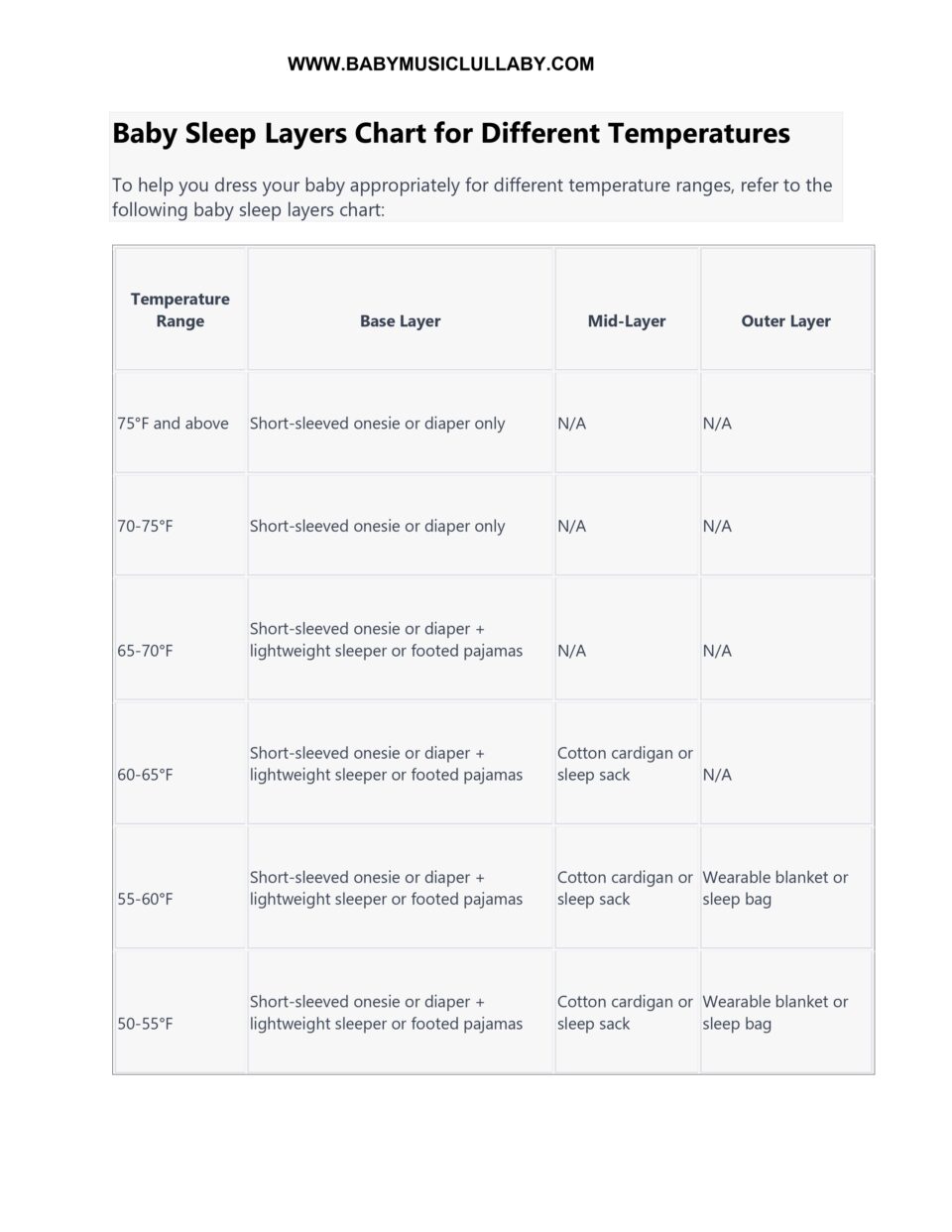Contents
Introduction
As a parent, ensuring your baby’s comfort and safety during sleep is of utmost importance. One key aspect is understanding how to dress your baby in appropriate layers to maintain an optimal sleep environment. In this article, we will provide you with a comprehensive baby sleep layers chart to help you navigate the different seasons and temperatures.
Why Are Baby Sleep Layers Important?
Babies have delicate and developing bodies, and their ability to regulate body temperature is not as efficient as adults. Using layers allows you to add or remove clothing to keep them comfortable throughout the night. By following a baby sleep layers chart, you can ensure your little one stays warm in colder temperatures and avoids overheating in warmer climates.
Understanding the Baby Sleep Layers Chart
1. Base Layer
The base layer is the foundation of your baby’s sleep attire. It should be made of a lightweight, breathable fabric such as cotton or bamboo. Opt for a long-sleeved onesie or a sleep sack, depending on your baby’s preference. This layer helps maintain a comfortable body temperature and provides a cozy base for additional layers.
2. Mid-Layer
The mid-layer provides extra insulation and warmth when needed. It can consist of a lightweight sleeper or footed pajamas. In cooler temperatures, you can choose a slightly thicker fabric or add a cotton cardigan or sleep sack.
3. Outer Layer
The outer layer serves as protection against cold drafts or chilly rooms. It includes items like a sleep sack with sleeves, a wearable blanket, or a sleep bag. These options provide additional warmth and ensure your baby stays snug throughout the night.
Baby Sleep Layers Chart for Different Temperatures
To help you dress your baby appropriately for different temperature ranges, refer to the following baby sleep layers chart:
| Temperature Range | Base Layer | Mid-Layer | Outer Layer |
|---|---|---|---|
| 75°F and above | Short-sleeved onesie or diaper only | N/A | N/A |
| 70-75°F | Short-sleeved onesie or diaper only | N/A | N/A |
| 65-70°F | Short-sleeved onesie or diaper + lightweight sleeper or footed pajamas | N/A | N/A |
| 60-65°F | Short-sleeved onesie or diaper + lightweight sleeper or footed pajamas | Cotton cardigan or sleep sack | N/A |
| 55-60°F | Short-sleeved onesie or diaper + lightweight sleeper or footed pajamas | Cotton cardigan or sleep sack | Wearable blanket or sleep bag |
| 50-55°F | Short-sleeved onesie or diaper + lightweight sleeper or footed pajamas | Cotton cardigan or sleep sack | Wearable blanket or sleep bag |
| 45-50°F | Short-sleeved onesie or diaper + lightweight sleeper or footed pajamas | Cotton cardigan or sleep sack | Wearable blanket or sleep bag |
| 40-45°F | Short-sleeved onesie or diaper + lightweight sleeper or footed pajamas | Cotton cardigan or sleep sack | Wearable blanket or sleep bag |
| Below 40°F | Short-sleeved onesie or diaper + lightweight sleeper or footed pajamas | Cotton cardigan or sleep sack | Wearable blanket or sleep bag + hat |
Please note that every baby is different, and you should consider their individual preferences and the specific conditions of your home when following the baby sleep layers chart.
Conclusion
Using the baby sleep layers chart as a guide, you can ensure your baby stays comfortable and cozy throughout the night, regardless of the outside temperature. Remember to monitor your baby’s cues for signs of overheating or coldness and adjust the layers accordingly. By dressing your baby in appropriate sleep layers, you provide them with a peaceful and restful sleep.


 Subscribe to Get Soothing Lullabies to Help Your Baby to Sleep
Subscribe to Get Soothing Lullabies to Help Your Baby to Sleep
2 comments
[…] Baby Sleep Layers Chart […]
[…] Baby Sleep Layers Chart […]